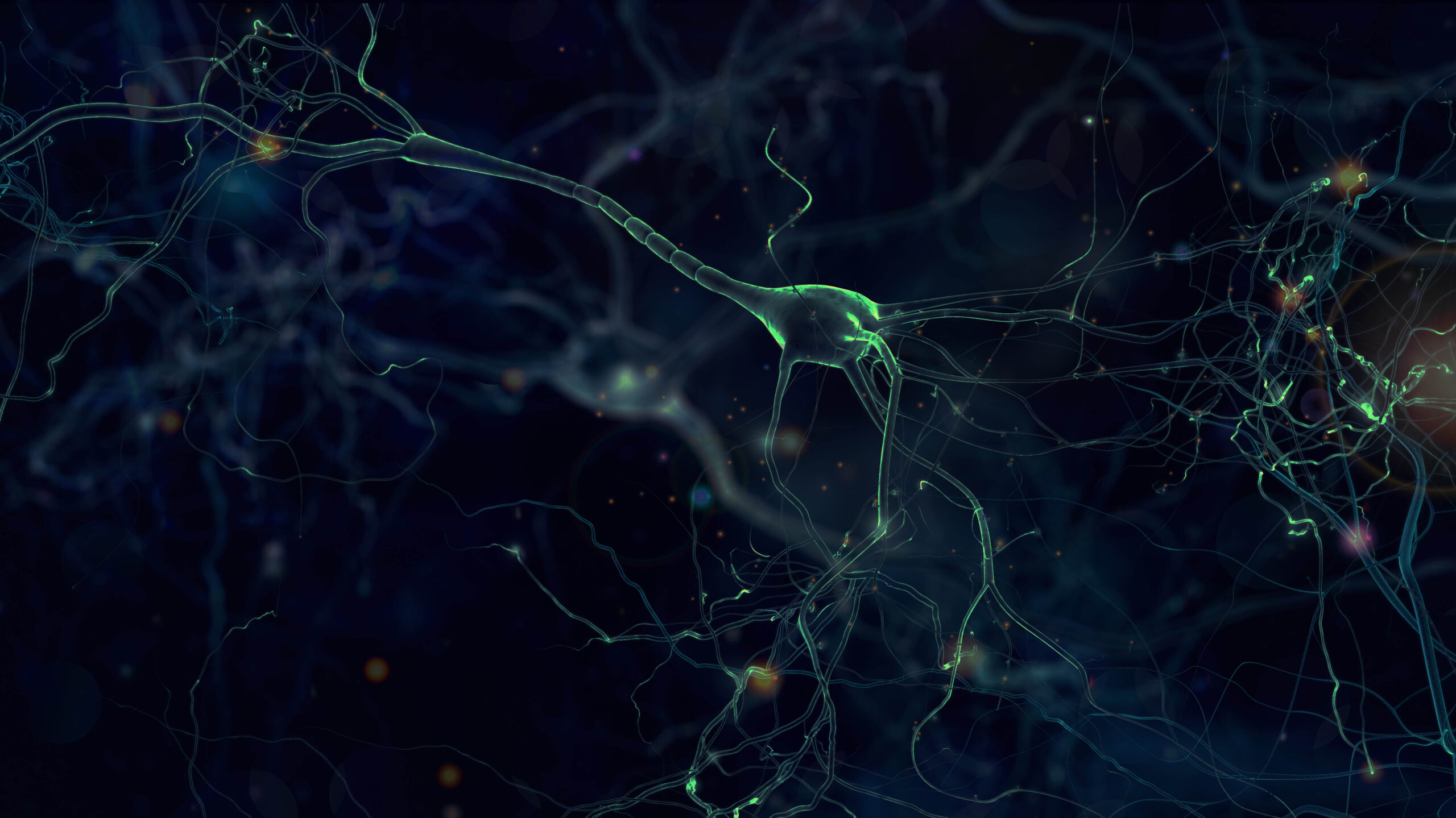
Our Research
Areas of Interest
Our search for a drug for Alzhiemer's Disease takes us into a variety of dynamic research disciplines. Below are some areas of our current research.
Neuroinflammation
Inflammation is a vital defense mechanism by which your body identifies a localized region needing either repair or protection from invading pathogens. This process should be tightly regulated and crucially transient. In the brains of patients with Alzheimer's disease however, evidence is suggesting that there is an uncontrolled inflammatory cascade which may be contributive to, or even responsible for, the death of brain cells. As we understand it now, this involves the brain's glial cells which express an atypically overactive phenotype (behavior). We are looking for ways to mediate this inflammation and bring it back under control by targeting and eliminating the molecular pathways that over-activate glial cells.
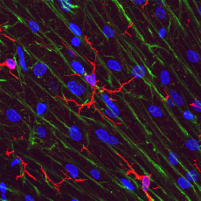
Misfolded Proteins
The role of misfolded proteins in Alzheimer's disease is arguably one of the most controversial areas in medicine today. For decades it was believed that a pair of misfolded proteins named amyloid beta and Tau gradually accumulated and clumped in the brain leading to Alzheimer’s progressive neurodegeneration. These proteins therefore became intense targets for research and extensive trials searched for treatments abating these protein pathologies. However, almost without exception, these trials failed to achieve their aims. This has led many to suppose that the amyloid and Tau hypotheses may be misleading, if not entirely erroneous. Yet, there is ample evidence to suggest that once these pathologies are in place, they can augment, perhaps even instigate, the inflammatory damage in the brain. Our lab is committed to finding ways to lessen the impact of these toxic proteins.
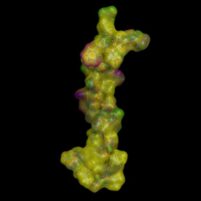
Assay Development
As a medicinal chemistry and drug development lab part of our work is developing practical assays to test the efficacy of the agents we are developing. These assays may involve testing how proteins interact with each other, or more broadly how cells react to the presence of a particular molecule, either way this careful process can take weeks of work to develop and validate.
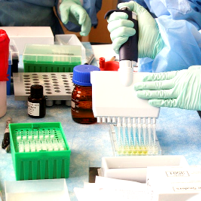
Modeling Alzheimer’s Disease
A major deficiency in the study of Alzheimer's disease is the lack of a practical model of the various overlapping pathologies. Currently we rely on a series of distinct models representing individual pathologies, but these do not account for the synergism, or possible additive effects, between pathologies. We are seeking better and more practical models, both biological and computational, which can help us better predict how our potential treatments will work in a human brain with Alzheimer's disease.

The blood brain barrier
This crucial barrier separates the brain from the rest of the body’s fluids, including blood. When intact, this barrier protects the brain from most toxins, including many drugs. This also means that the drugs we design, destined precisely for the brain cells beyond this barrier, may not be able to reach the cells they are destined for. We are exploring ways to overcome this barrier and ensure that the drugs we so carefully design are ultimately able to reach the brain to enact their effect. As with other elements of our research, this involves computational, biological and chemical studies.
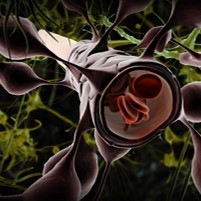
COVID-19
Many of the processes which lead to lung damage in COVID-19 are similar to those causing brain damage in Alzheimer's disease. Though not a typical infectious disease lab, we are actively searching for opportunities to repurpose drugs to treat the complications of COVID-19.
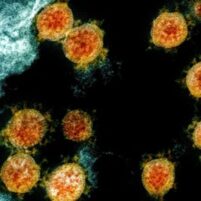
Publications
A selection of our recent academic publications:
- Weaver DF. Rotator drift: A sign of upper motor neuron leg weakness. Clin Neurol Neurosurg. 2020 Jul 13;197:106084. doi: 10.1016/j.clineuro.2020.106084. PMID: 32683196
- Wang Z, Wang Y, Vilekar P, Yang S-P, Gupta M, Oh MI, Meek A, Doyle L, Villar L, Brennecke A, Liyanage I, Reed M, Barden C, Weaver DF. Small molecule therapeutics for COVID-19: repurposing of inhaled furosemide. PeerJ. 2020 Jul 7;8:e9533. doi: 10.7717/peerj.9533. PMID: 32704455
- Brennecke A, Villar L, Wang Z, Doyle LM, Meek A, Reed M, Barden C, Weaver DF. Is Inhaled Furosemide a Potential Therapeutic for COVID-19? Am J Med Sci. 2020 Jun 1:S0002-9629(20)30238-X. doi: 10.1016/j.amjms.2020.05.044. PMID: 32622469
- Brennecke A, Weaver DF. Anticonvulsant effects of sertraline: a case report. 2020 May 22;80:1-2. doi: 10.1016/j.seizure.2020.05.016. PMID: 32474383
- Rafiee M, Patel K, Groppe DM, Andrade DM , Bercovici E, Bui E, del Campo JM , Carlen PL, Reid A, Tai P, Weaver DF, Wennberg R, Valiante TA. Daily Listening to Mozart Reduces Seizures in Individuals with Epilepsy: A Randomized Control Study. Epilepsia Open. 2020 May 27;5(2):285-294. doi: 10.1002/epi4.12400. PMID: 32524054
- Snieckus V, Kreft A, Reed M, Weaver DF. Construction of Highly Substituted Furans and Thiophenes with Sulfur Ylides. 2020 Apr;16(04):0930. 10.1055/s-0040-1707656.
- Snieckus V, Villar L, Weaver DF, Reed M. Chemodivergent and Enantiospecific Synthesis of Benzazepines and Allyl Fluorides. 2020 Apr; 16(04):0387. 10.1055/s-0040-1707655.
- Snieckus V, Doyle L, Weaver DF. Regioselective Synthesis of Polyfluorinated o-Hydroxyacetophenones. 2020 Apr;16(04):0386. 10.1055/s-0040-1707654.
- Snieckus V, Wang Z, Weaver DF. Biaryls from Anilines and Aryl Sulfoxides through Sigmatropic Rearrangement. 2020 Feb;16(02):0143. 10.1055/s-0039-1691629.
- Snieckus V, Sharma S, Weaver DF. Difluoromethylation of 1,2,4-Triazinones by a Copper-Catalyzed Interrupted Click Reaction. 2020 Feb; 16(02):0142 10.1055/s-0039-1691630.
- Snieckus V, Reddy A, Weaver DF. Synthesis of Cyclic Sulfoximines through 5-endo-dig Cyclization of N-Propargylsulfinamides. 2020 Jan; 16(01):0021. 10.1055/s-0039-1691360.
- Snieckus V, Mohan D, Weaver DF. Multicomponent Mannich Reaction through C–H Activation of Azabiaryls. 2020 Jan;16(01):0020. 10.1055/s-0039-1691361.
- Snieckus V, Zheng Y, Weaver DF. [3+2] Cycloadditions of 3-Nitroindoles with Substituted γ-Allenoates. Synfacts. 2020 Jan; 16(01):0014. 10.1055/s-0039-1691362.
- Oh MI, Oh CI, Weaver DF. Effect of Cholesterol on the Structure of Networked Water at the Surface of a Model Lipid Membrane. J Phys Chem B. 2020 Apr 9. doi: 10.1021/acs.jpcb.0c01889
- Oh MI, Oh CI, Gupta M, Weaver DF. Decoding Interfacial Water Orientation to Predict Surface Charge Density on a Model Sheet Using a Deep Learning Algorithm. J Phys Chem C. 2020 January 7; 124(4):2574-2582. org/10.1021/acs.jpcc.9b11442
- Oh MI, Gupta M, Weaver DF. Understanding Water Structure in an Ion-Pair Solvation Shell in the Vicinity of a Water/Membrane Interface. J Phys Chem B. 2019 May 9;123(18):3945-3954. doi: 10.1021/acs.jpcb.9b01331. Epub 2019 May 1. PMID: 31009219
- Oh MI, Gupta M, Oh CI, Weaver DF. Understanding the effect of nanoconfinement on the structure of water hydrogen bond networks. Phys Chem Chem Phys. 2019 Dec;21(47):26237-26250. doi: 10.1039/c9cp05014k
- Oh MI, Weaver DF. Explicit and Implicit Water Models for Biomolecular Simulations. Reference Module in Chemistry, Molecular Sciences and Chemical Engineering. 2019 Jul 30. online publication. http://www.sciencedirect.com/science/article/pii/B978012409547214661X.
- Gupta M, Bogdanowicz T, Reed MA, Barden CJ, Weaver DF. The Brain Exposure Efficiency (BEE) Score. ACS Chem Neurosci. 2020 Jan 15;11(2):205-224. doi: 10.1021/acschemneuro.9b00650
- Gupta M, Lee HJ, Barden CJ, Weaver DF. The Blood-Brain Barrier (BBB) Score. J Med Chem. 2019 Nov 14;62(21):9824-9836. doi: 10.1021/acs.jmedchem.9b01220
- Liu H, Stover KRJ, Sivanenthiran N, Chow J, Cheng C, Liu Y, Lim S, Wu C, Weaver DF, Eubanks JH, Song H, Zhang L. Impaired Spatial Learning and Memory in Middle Aged Mice with Kindling-induced Spontaneous Recurrent Seizures. Frontiers in Pharmacology. 2019 Sep 24;10:1077. doi: 10.3389/fphar.2019.01077.
- Fertan E, Stover KRJ, Brant MG, Stafford PM, Kelly B, Diez-Cecilia E, Wong AA, Weaver DF, Brown RE. Effects of the Novel IDO Inhibitor DWG-1036 on the Behavior of Male and Female 3xTg-AD Mice. Frontiers in Pharmacology. 2019 (Sept 24); 10:1-5, doi:10.3389/phar.2019.01044.
- Liyanage SI, Gupta M, Wu F, Taylor M, Carter MD, Weaver DF. Inhibition of Pantothenate Synthetase by Analogs of β-Alanine Precursor Ineffective as an Antibacterial Strategy. 2019;64(1):22-27. doi: 10.1159/000499899. PMID: 31167192
- Liyanage SI, Weaver DF. Misfolded proteins as a therapeutic target in Alzheimer’s disease. In: Rossen Donev, editor(s). Advances in Protein Chemistry and Structural Biology. 118. Elsevier; 2019. p. 371-411.
- Liyanage SI, Vilekar P, Weaver DF. Nutrients in Alzheimer’s Disease: The Interaction of Diet, Drugs and Disease. Can J Neurol Sci 2019 Jan;46(1):23-34. doi: 10.1017/cjn.2018.353.
- Weaver DF. The Neurologist’s Oath. Can J Neurol Sci. 2019 Jan 46(1):121. doi:10.1017/cjn.2018.357
- Snieckus V, Villar L, Weaver DF, Reed MA. Selective Synthesis of Thio-Substituted Cyclotriphosphazene Derivative”. Synfacts. 2019 Dec;15(12):1363.
- Snieckus V, Doyle LM, Weaver DF. Preparation of Thietane, Thiolane, and Thiane Perfluorinated Diels–Alder Products. Synfacts. 2019 Dec;15(12):1359.
- Snieckus V, Wang Z, Weaver DF. Brønsted Acid Catalyzed Synthesis of α-(3-Indolyl) Ketones. Synfacts. 2019 Oct;15(10):1114.
- Snieckus V, Sharma S, Weaver DF. Palladium–NHC Catalyzed Coupling of Organolithium Reagents at Low Temperatures. Synfacts. 2019 Oct;15(10):1109.
- Snieckus V, Darapaneni CM, Weaver DF. Triflic Acid-Mediated Synthesis of (Z)-β-Enamido Triflates and Fluorosulfonates. Synfacts. 2019 Sep;15(9):0965.
- Snieckus V, Zheng Y, Weaver DF. Directing-Group-Free C7-Alkylations of N-Alkylindoles by Zirconium Complexes. Synfacts. 2019 Sep;15(09):0987.
- Snieckus V, Doyle LM, Weaver DF, Reed MA. Synthesis of 1,4-Benzothiazines by Iodide-Catalyzed Alkene Sulfenoamination. Synfacts. 2019 Aug;15(8):862.
- Snieckus V, Villar L, Weaver DF, Reed MA. Asymmetric Synthesis of Dihydrobenzofurans by an Organocatalytic [4+1] Cyclization. Synfacts. 2019 Aug;15(08):0865.
- Snieckus V, Sharma S, Weaver DF, Reed MA. 9a,10,12,12a-Tetrahydrobenzo[b]cyclopenta[f]pyrrole [1,2-d][1,4]diazepinones. Synfacts. 2019 Jun;15(6):0604. doi: 10.1055/s-0037-1611589.
- Snieckus V, Zheng Y, Weaver DF, Reed MA. Quinolines by Hydride Abstraction Induced Electrocyclization. Synfacts. 2019 May;15(5):0480. doi: 10.1055/s-0037-1612516
- Snieckus V, RS Mancini, DF Weaver, M Reed. Synthesis of Carbazoles and Indolines by Gold-Catalyzed Diels–Alder Reactions. Synfacts. 2019 Apr;15(4):0360.
- Snieckus V, Doyle LM, Weaver DF, Reed MA. Synthesis of Indolo[1,2-α ]indole Derivatives byGold(I)-Catalyzed Cycloisomerization. Synfacts. 2019 Apr;15(4):0350. doi: 10.1055/s-0037-1612373
- Snieckus V, RS Mancini, DF Weaver, M Reed. Synthesis of Benzodithiazines by an ortho-Metalation–Oxidative Cyclization Route. Synfacts. 2019 Mar;15(3):0226.
- Snieckus V, Alla SR, Weaver DF, Reed MA. Pyrrolo[2,3-d]carbazoles by Brønsted Acid Catalyzed Cyclization of Ynamides. 2019, 5: 481. doi: 10.1055/s-0037-1612517
- Snieckus V, Villar L, Weaver DF, Reed MA. Synthesis of Carbazoles and Indolines by Gold-Catalyzed Diels–Alder Reactions. 2019, 4: 360. doi: 10.1055/s-0037-1612374
- Weaver DF. Alzheimer’s – There’s Still Light at the End of the Tunnel. Biotechnology Focus. 2018 Dec 28; p 1.
- Fleck-Prediger CM, Ghosh Hajra S, Liu CC, Gray DS, Weaver DF, Gopinath S, Dick BD, D’Arcy RCN Point-of-care brain injury evaluation of conscious awareness: wide scale deployment of portable HCS EEG evaluation. Neurosci Conscious. 2018 Nov 23;2018(1):niy011. doi: 10.1093/nc/niy011
- Mancini RS, Wang Y, Weaver DF. Phenylindanes in Brewed Coffee Inhibit Amyloid-Beta and Tau Aggregation. Front Neurosci. 2018 Oct 12;12:735. doi: 10.3389/fnins.2018
- Liyanage SI, Santos C, Weaver DF. The hidden variables problem in Alzheimer’s clinical trial design. Alzheimer’s & Dementia: Translational Research & Clinical Interventions. 2018 Nov 13; 4:628-635.
- Santos C, Weaver DF. Topically applied linoleic/linolenic acid for chronic migraine. J Clin Neuroscience. 2018 Oct 10. pii: S0967-5868(18)30648-9. doi: 10.1016/j.jocn.2018.10.013
- Kolaj I, Liyanage SI, Weaver DF. Phenylpropanoids and Alzheimer’s Disease: A potential therapeutic platform. Neurochemistry International. 2018 Aug 8;120:99-111.
- Weaver DF. Concussion, Cagney, Captains of the Clouds. Can J Neurol Sci. 2018 Nov;45(6):682-685. doi: 10.1017/cjn.2018.332
- Weaver DF. The Impending Alzheimer’s Disease Pandemic. University of Toronto Medical Journal. 2018 April;95(2):6-7
- Weaver DF. In The Alzheimer’s Waiting Room. Can Med Assoc J. 2018 August 20;190(33):E989-E990; DOI: https://doi.org/10.1503/cmaj.180320
- Meek A, Morzycki A, Carter MD, Barden C, Weaver DF. Serotonin as a Drug Receptor for Li+: A Computational Study. Can J Chem. 2018 May 28;96:694-702.
- Brant M, Goodwin-Tindall J, Stover K, Stafford P, Wu F, Meek A, Schiavini P, Wohnig S, Weaver DF. Identification of Potent Indoleamine 2,3-Dioxygenase 1 (IDO1) Inhibitors Based on a Phenylimidazole Scaffold. ACS Medicinal Chemistry Letters. 2018 Jan 11;9(2):131-136.
- Stover K, Lim S, Zhou T-L, Stafford P, Chow J, Li H, Sivanenthiran N, Mylvaganam S, Wu C, Weaver DF, Eubanks J, Zhang L. Susceptibility to Hippocampal Kindling Seizures is Increased in Aging C57 Black Mice. IBRO Reports. 2017 Dec; 3:33-44.
- Weaver DF. Lingua patientis: new words for patient communication and history taking. Scott Med J. 2017 Nov;62(4):147-148.
- Weaver DF. Disruptive technology disorder: A past, present and future neurologic syndrome. Neurology. 2017 Jul; 89(4):395-398.
- Hawco C, Weaver DF. The Bingo Card Sign as an Early Symptom of Alzheimer’s Disease. Ir Med J. 2017 Apr;110(4):551.
- Russell S, Rahmani R, Jones A, Newson H, Neilde K, Cotillo I, Rahmani Khajouei M, Ferrins L, Qureishi S, Nguyen N, Martinez M, Weaver DF, Kaiser M, Riley J, Thomas J, De Rycker M, Read K, Flematti G, Ryan E, Charman S, Kessler A, Avery V, Baell J, Piggott M. Hit-to-lead optimisation of a novel class of potent, broad-spectrum trypanosomacides. J Med Chem. 2016 Sep; 59(21):9686-9720.
- Barden CJ, Weaver DF, Taylor M, Yadav A, Reed MA. Targeting β-Amyloid and tau protein oligomers and aggregates as a novel approach to the treatment of Alzheimer’s disease. Med Chem Reviews. 2016; 51(17): 281-299.
- Weaver DF. Alzheimer’s disease: true enemy of humankind. Neurology. 2016 Jul;87(4):e33.
- Maclean MA, Diez-Cecilia E, Lavery CB, Reed MA, Wang Y, Weaver DF, Stradiotto M. Diversification of edaravone via palladium-catalyzed hydrazine cross-coupling: applications against protein misfolding and oligomerization of β-amyloid. Bioorg Med Chem Lett. 2016 Jan;26(1):100-4.
- Hawco C, Wang Y, Taylor M, Weaver DF. A maple syrup extract prevents β-amyloid aggregation. Can J Neurol Sci. 2016 Jan; 43(1):198-201.
- Padmos JD, Boudreau RT, Weaver DF, Zhang P. Structure of tiopronin-protected nanoclusters in a one-dimensional assembly. J Phys Chem C. 2015 Oct;119(43):24627-35.
- Padmos JD, Boudreau RT, Weaver DF, Zhang P. Impact of protecting ligands on surface structure and antibacterial activity of silver nanoparticles. Langmuir. 2015 Mar;31(12):3745-52.
- Weaver DF, Hawco CL. Geminate consonant grapheme-colour synaesthesia (ideaesthesia). BMC Neurol 2015 Jul;15:112.
- Weaver DF. Font specific reading-induced seizures. Clin Neurol Neurosurg. 2014 Oct;125:210-1.
- Weaver DF. Alzheimer’s: three voices, one song. Neurology. 2014 Aug;83(9):e97.
- Laine Green A, Weaver DF. Vagal stimulation by manual carotid sinus massage to acutely suppress seizures. J Clin Neurosci. 2014 Jan;21(1):179-80.
- Lu E, Yadav A, Weaver DF, Reed MA. An efficient method for the protection of aromatic amines with benzostabase and its utility in anionic aromatic transformations. Synlett. 2013;24(17):2259-62.
- MacPhee S, Weaver IN, Weaver DF. An evaluation of inter-individual responses to the orally administered neurotransmitter β-alanine. J Amino Acids. 2013 Jun;2013:429847. Available from: https://www.hindawi.com/journals/jaa/2013/429847/ DOI: 10.1155/2013/429847.
- Weaver IN, Weaver DF. Drug design and discovery: translational biomedical science varies amongst countries. Clin Transl Sci. 2013 Oct;6(5):409-13.
- Meek A, Simms G, Weaver DF. Searching for an endogenous anti-Alzheimer’s molecule: identifying small molecules of the brain that ameliorate Alzheimer’s disease progression by inhibition of β-amyloid aggregation. J Psychiatry and Neurosci. 2013 Jul;38(4):269-75.
- Weaver DF, Pohlmann-Eden B. Pharmacoresistant epilepsy: unmet needs in solving the puzzle(s). 2013 May;54(S2):80-85.
- Weaver DF. Design of innovative therapeutics for pharmacoresistant epilepsy: challenges and needs. Epilepsia. 2013 May;54(S2):56-9.
- Pohlmann-Eden B, Weaver DF. The puzzle(s) of pharmacoresistant epilepsy. Epilepsia. 2013 May;54(S2):1-4.
- Weaver IN, Weaver DF. A simple electrotopological index for quantitative structure activity relationship correlation of physical properties with biomolecular activities. J Math Chem. 2013 Jan;51(3):811-6.
- Meek A, Simms G, Weaver DF. In silico search for an endogenous anti-Alzheimer’s molecule: screening amino acid metabolic pathways. Can J Chem. 2012 Aug;90(10):865-73.
- D’Arcy RC, Hajra SG, Liu C, Sculthorpe L, Weaver DF. Towards brain first-aid: a diagnostic device for conscious awareness. IEEE Trans Biomed Eng.2011 Mar;58(3):750-4.
- Tiedje KE, Stevens K, Barnes S, Weaver DF. b-alanine as a small molecule neurotransmitter. Neurochem Int. 2010 Oct;57(3):177-88.
- Carter MD, Simms GA, Weaver DF. The development of new therapeutics for Alzheimer’s disease. Clin Pharmacol Ther. 2010 Sep;88(4):475-86.
- Weaver DF. Science as a human voice. Can J Neurol Sci. 2010 Jul;37(4):539-40.
- Matta C, Arabi A, Weaver DF. The bioisosteric similarity of the tetrazole and carboxylate anions: quantum mechanics calculation of the topologies of the electrostatic potential and of the electron density. Eur J of Med Chem. 2010 May;45(5):1868-72.
- Weaver DF, Weaver CA. Exploring neurotherapeutic space: how many neurological drugs exist (or could exist)? J Pharm Pharmacol 2010 Jan;63(1):136-9.
- Gawryluk JR, D’Arcy RC, Connolly JF, Weaver DF. Improving the clinical assessment of consciousness in the electric brain. BMC Neurol. 2010 Jan;10:11.
For a full list of publications, please visit PubMed, Scopus or ORCID.
Patents
A selection of our recent patents:
- D’Arcy R, Weaver DF, Hajra S, Liu C, Sculthorpe L. Cognitive Function Assessment in a Patient. European patent 2594963 issued November 9, 2016
- Barden CJ, Carter MD, Reed MA, Yadav A, Sun S, Weaver DF. Methods of treating amyloid disease using analogs of 1-(4-nitrophenyl) piperazine. Canadian patent 2,735,158 issued November 8, 2016
- Barden CJ, Carter MD, Reed MA, Yadav A, Sun S, Weaver DF. Methods of treating amyloid disease using analogs of 1-(4-nitrophenyl) piperazine. Israel patent 211425 issued July 25, 2016
- D’Arcy R, Weaver DF, Hajra S, Liu C, Sculthorpe L. Cognitive Function Assessment in a Patient. US patent 2594963 issued May 17, 2016
- Barden CJ, Carter MD, Reed MA, Yadav A, Sun S, Weaver DF. Methods of treating amyloid disease using analogs of 1-(4-nitrophenyl) piperazine. Australian patent 2009285591 issued December 10, 2015
- Hadden M, Carter MD, Jacobo SMH, Lu E, Weaver DF. Treatment of protein folding disorders. Canadian patent 2,609,980 issued Oct 13, 2015
- Barden CJ, Byers DM, Henneberry AL, McMaster CR, Weaver DF, Wu F. Design and synthesis of novel antimicrobials. United States Patent 8,835,476, issued September 16, 2014.
- Barden CJ, Carter MD, Reed MA, Yadav A, Sun S, Weaver DF. Methods of treating amyloid disease using analogs of 1-(4-nitrophenyl) piperazine. Chinese patent 102170882 issued April 2, 2014
- Wu F, Weaver DF, Barden CD, McMaster C, Henneberry A, Ban F, Byers D. Design and synthesis of novel antimicrobials. Canada patent issued February 4, 2014
- Barden CJ, Carter MD, Reed MA, Yadav A, Sun S, Weaver DF. Methods of treating amyloid disease using analogs of 1-(4-nitrophenyl) piperazine. United Kingdom patent 2320897 issued January 15, 2014.
- Barden CJ, Carter MD, Reed MA, Yadav A, Sun S, Weaver Methods of treating amyloid disease using analogs of 1-(4-nitrophenyl) piperazine. Hong Kong Patent 1157228, issued January 15, 2014.
- Barden CJ, Byers, DM, Henneberry AL, McMaster CR, Weaver DF, Wu F. Design and synthesis of novel antimicrobials. Canadian Patent 2,603,534, issued February 4, 2014.
- Barden CJ, Carter MD, Reed MA, Yadav A, Sun S, Weaver DF. Methods of treating amyloid disease using analogs of 1-(4-nitrophenyl) piperazine. German Patent 2320897, issued January 15, 2014.
- Barden CJ, Carter MD, Reed MA, Yadav A, Sun S, Weaver DF. Methods of treating amyloid disease using analogs of 1-(4-nitrophenyl) piperazine. French Patent 2320897, issued January 15, 2014.
- Barden CJ, Carter MD, Reed MA, Weaver DF, Yadav A, Sun S. Methods of treating amyloid disease using analogs of 1-(4-nitrophenyl) piperazine. New Zealand Patent 591896, issued July 2, 2013.
- Barden CJ, Carter MD, Reed MA, Weaver DF, Yadav A, Sun S. Methods of treating amyloid disease using analogs of 1-(4-nitrophenyl) piperazine. U.S. Patent 8,420,640, issued April 16, 2013.
- Carter MD, Weaver DF, Jacobo SM, Lu E, Gao F. Compounds and methods for treating protein misfolding disorders. U.S. Patent 8,362,066, issued January 29, 2013.
- Kisilevsky R, Szarek WA, Weaver DF. Sulfonated compounds and compositions for treating amyloidosis. U.S. Patent No. 7754761, issued July 13, 2010.
- Gupta A, Kong X, Migneault D, Szarek WA, Weaver DF. Compounds for inhibiting IAPP-associated amyloid deposits. Patent No. EP20000930923, issued May 5, 2010.
- Gordon H, Szarek WA, Weaver DF, Kong X. Compositions and methods for treating amyloidosis using sulphonate derivatives. PCT number PCT/CA2000/000494, Application No. EP20000922395, issued September 2, 2009.
In the News
Disseminating our research is an important part of what we do. Here's a selection of our work in the media:
- 2020 – CTV Television News, Interview, “Drug Offers Hope for Stroke”, February 21, 2020
- 2020 – CBC Television, National News, Interview, “Exercise could help prevent dementia”, January 6, 2020
- 2019 – City News Television Toronto, “Dr. Donald Weaver is one of the 2020 Harrington Scholar-Innovator Award recipients”, December 19, 2019
- 2019 – Podcast UHN, Toronto, “Beating Back Alzheimer’s, One Poem at a Time with Dr. Donald Weaver”, December 17, 2019
- 2019 – CTV Toronto Television News, “Disney Star with Epilepsy Dies from Seizure”, August 9, 2019
- 2019 – CBC Radio, The Current, “Alzheimer’s: The Amyloid Hypothesis – Is It Dead?”, March 29, 2019, Host Piya Chattopadhyay
- 2019 – Bell Media national radio interview with Richard Crouse, “Alzheimer’s, Concussion, Cagney, Captains of the Clouds”, recorded on December 19, 2018, aired on January 12, 2019
- 2018 – Ottawa Today 1310 News Radio, “Dementia and Domestic Violence”, December 4, 2018
- 2018 – CTV NewsNet National television news, “Dementia and Domestic Violence”, November 20, 2018
- 2018 – Bell Media Radio, “Alzheimer’s and Domestic Violence” (with Todd van der Heyden), November 17, 2018, broadcast on the following radio stations:
- 2018 – 102.7FM Melbourne Australia Independent Radio, “Alzheimer’s: An Interview” (with Headley Gritter), November 11, 2018
- 2018 – KCBS Radio San Francisco, “Alzheimer’s and Coffee”, Nov 9, 2018
- 2018 – CTV NewsNet National television news, “Can pollution affect cognition?”, August 28, 2018
- 2018 – CJAD Radio 800 Montréal, “Alzheimer’s – What’s New”, May 28, 2018
- 2018 – CBC National Television News, “Is our current approach to curing Alzheimer’s the right one?”, May 22, 2018
- 2018 – Global Canada National Television News, “A new definition of Alzheimer’s disease”, April 15, 2018
- 2018 – Radio Canada (CBC French), “Des centaines des marches en apui à la science”, Avril 14, 2018
- 2018 – CBC Ontario radio interview, “Ontario Today: Questions about Alzheimer’s Disease-Search for a Cure”, January 23, 2018
- 2016 – 770 News Talk Radio Calgary interview, “Can maple syrup protect against Alzheimer’s disease?”, March 22, 2016
- 2016 – CBC-Southern Ontario radio news interview, “Can Maple Syrup protect against Alzheimer’s disease?”, March 21, 2016
- 2016 – CBC-Ottawa radio news interview, “Maple syrup could protect against Alzheimer’s disease?”, March 18, 2016
- 2016 – CBC-Toronto radio news interview, “Maple Syrup could protect against Alzheimer’s disease?”, March 18, 2016
- 2016 – CTV National Television News, “Can Maple Syrup protect against Alzheimer’s Disease?”, November 18, 2016
- 2016 – Global Television News Canada, “Is maple syrup the new brain food? Canadian research suggests it could protect against Alzheimer’s”, March 17, 2016
- 2016 – CBC-Montréal (English) radio news, “Maple Syrup protects brain cells in Alzheimer’s disease”, March 16, 2016
- 2016 – Fox29 News, “Maple Syrup could cure Alzheimer’s”, March 15, 2016
